|
|
Toa Alta
Toa Alta is a municipality in the North of Puerto Rico on the western side of the San Juan Metropolitan Area. With a history as a formal town dating from the mid-18th century it is one of the oldest municipalities in Puerto Rico.

|
|
Welcome to Toa Alta
|
The town (along with Toa Baja to the North) takes its name from the Taino word "toa" or "thoa" meaning "mother" and was the name the Taino people gave to the river running through the region, today known as Río de la Plata. During the early Spanish colonial period the area was established as La Granja del Rey (The King's Farm) by Juan Ponce de Leon for experimentation in the growing of European and local crops to find out what was best suited to the area. The earliest settlers to the area were primarily from the Canary Islands.
It was these early peasant farmer settlers from the Canary Islands who established the villages of Thoa Alta and Thoa Baxa and developed a thriving agricultural area around the Toa River. Of the two, Toa Baja was the first to be established as a municipality in 1745, but Toa Alta followed closely with its formal designation as a municipality in 1751 under the incumbency of Don Agustín Parejas as Governor of Puerto Rico. This coincided with the creation of the parish under the patronage of Nuestra Señora de la Concepción y San Fernando Rey. In its early years the town was also referred to by the names, Toa Arriba and Ribera de Toa Alta.
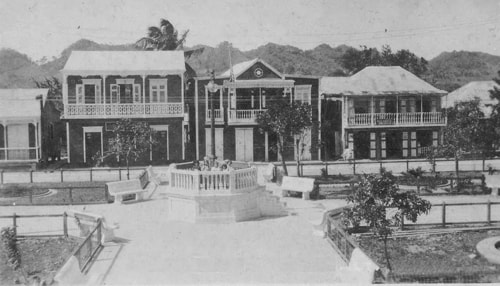
|
|
Plaza de Recreo of Toa Alta in 1910 Photo Source: Municipio de Toa Alta
|
In 1824 the size of the town was reduced when the original barrios of Anones, Lomas, Rio Cañas, Guadiana and Naranjito left to form the new town of Guadiana (known today as Naranjito). At the same time several of the remaining barrios adjusted their names, after which Toa Alta has remained stable in its municipal structure to the present day. There was an exception when, in 1902 as in several other municipalities around the island, the insular legislature merged the municipalities of Dorado and Corozal into Toa Alta. This was reversed in 1905 and everything returned to its previous structure.
By the late-19th century, in the continued development of its agricultural economy, Toa Alta's principal crops were cocoa, coffee and sugar. It also developed as the primary dairy producer in the area around San Juan and by 1974 had 20 first class dairy farms producing milk. As with much of Puerto Rico, Toa Alta has transitioned away from agriculture and today is developing more of an industrial/commercial economy, though it remains a significant dairy producer.
|
Parroquia San Fernando Rey
The parish church in Toa Alta was originally consecrated in parallel with the founding of the town as a municipality in 1751.
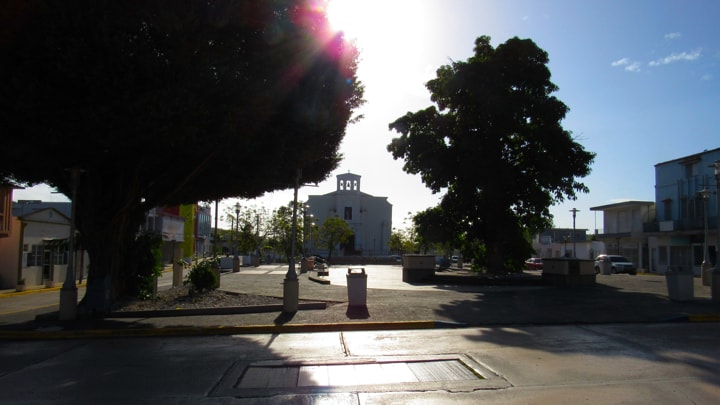
|
|
Parroquia San Fernando Rey, seen between the trees in the plaza
|
At that time the first church building was constructed in wood, but in the following year work began on a permanent structure in brick and masonry. Construction of the permanent building took time to complete, with the work on the roof beginning in 1802. The church was finally completed and ready to use for worship in 1826.
It survives largely intact to this day, despite earthquakes and hurricanes, with a few changes over the years made during some of the restorations that have taken place.
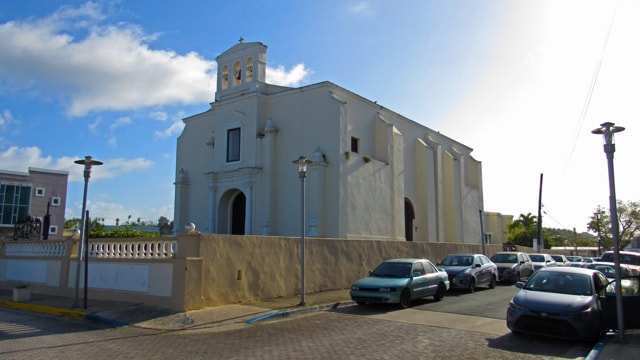
|
|
Viewed from the southeast corner of the plaza
|
The church was dedicated to Nuestra Señora de la Concepción y San Fernando Rey (Our Lady of the Conception and Saint Fernando, King), though today it is generally referred to only as San Fernando Rey.
The church sits on the East side of Plaza de Recreo Manuel Egozcue and is properly oriented, with a construction consisting of a single nave covered by a 38 ft wide barrel vault (making this roof the largest of its type of any church in Puerto Rico). A simple façade is enhanced by Corinthian columns and supports a belfry with three bells, which was added around 1861 as part of a restoration project overseen by José Y. Hernández.

|
|
The belfry
|
|
|
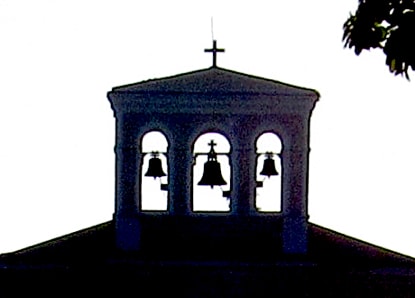
|
|
Viewed against the early morning sun
|
|
While there have been a number of restorations, it has maintained its design and style fairly consistently, including a reversal of an attempt to plaster over the inside of the roof. This was removed and the bricks were varnished to preserve them and allow their retention in the original open brick form.
The church was added to the National Registry of Historic Places in 1984 following a general survey of all the churches in Puerto Rico, and some of the photos included here are taken from the petition presented and accepted at that time.
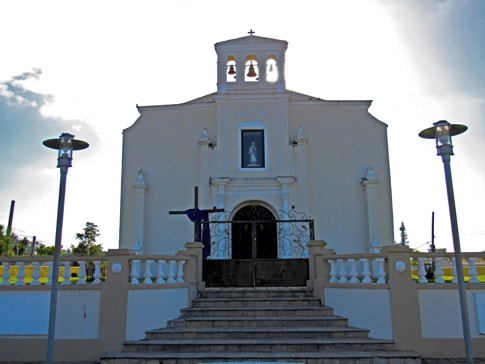
|
|
The façade looking out onto the plaza
|
|
|
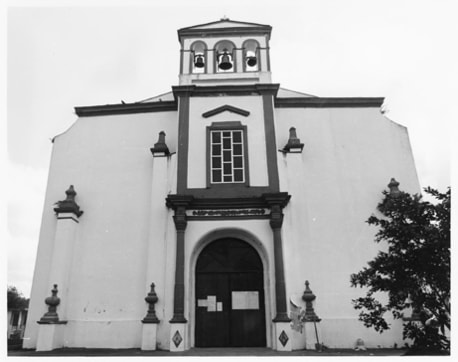
|
|
The façade in 1984Photo Source: National Register of Historic Places
|
|
|
Cannonball Tree
The Cannonball Tree (Arbol Bala de Cañón) of Toa Alta is a legendary tree of a type that is rare and thought to be unique within Puerto Rico.
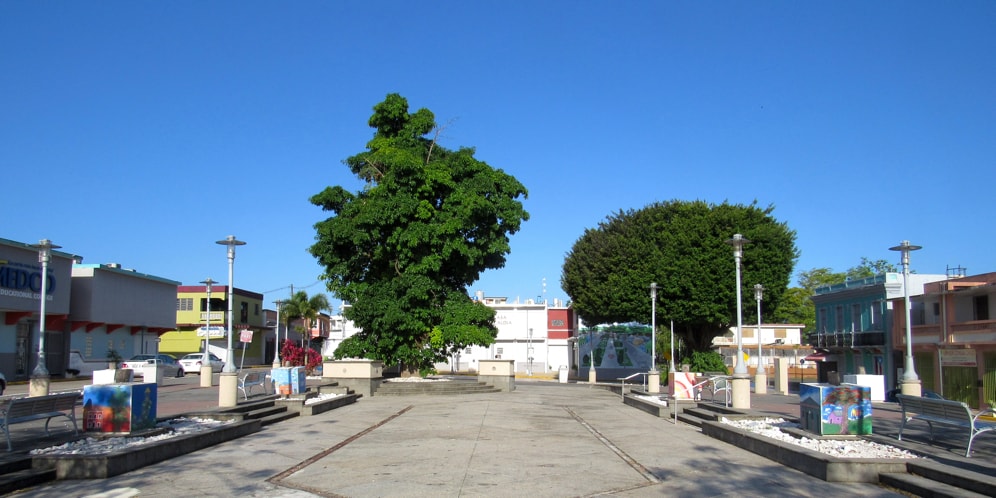
|
|
Arbol Bala de Cañón de Toa Alta in the plaza de recreo
|
The species of tree commonly known as the cannonball tree, whose scientific name is Couroupita guianensis, is native to the tropical forests of Central and South America. While it has been introduced to other tropical areas around the world, the example in Toa Alta appears to be unique within the Island.
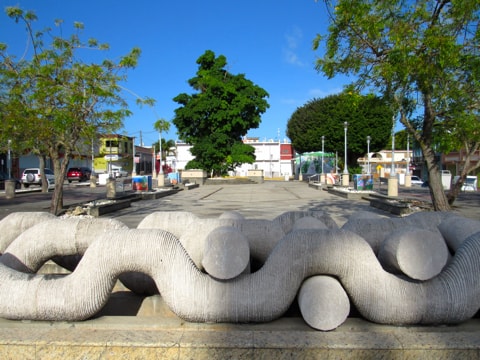
|
|
View from East side of the plaza towards the tree
|
This type of tree can reach heights of over 100ft, with long oval leaves typically being 3 to 12 inches long (but sometimes reaching lengths over 20 inches) and clustered at the ends of branches. The spectacular flowers are borne on racemes growing, not on the branches of the tree, but directly from its trunk. The racemes can be 30 inches long and profusely filled with flowers. The flower petals are typically light coloured on the outside and open into flowers of six petals with bright interior colours. Once the petals open, two sets of stamen are revealed which are generally white to pink in colours with one set in the base of the flower and the other forming a curved hood. The open flower generally measures about 6 inches across.
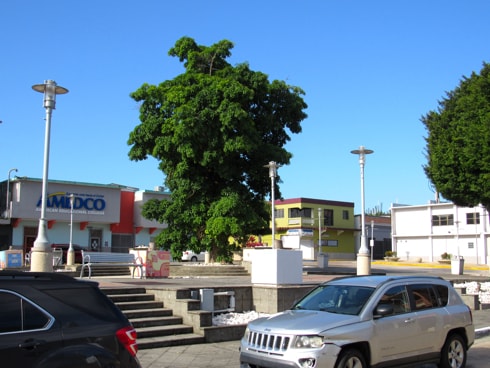
|
|
Arbol Bala de Cañón seen from North side of the plaza
|
When pollinated, flowers develop into fruits which are spherical with a woody shell that can reach diameters of almost 10 inches. The brownish colour of the spherical fruits resemble a rusty cannonball, giving the tree its common name.
When fully developed, which can take up to 18 months, each fruit may hold as many as 500 seeds. When opened the fruits show a white flesh which turns blue on contact with air. While edible, the fruit is not usually consumed by humans as it produces an unpleasant smell.
The Arbol Bala de Cañón in Toa Alta's Plaza de Recreo was planted from seed in 1912 by Major John A. Wilson (U.S. Army), Interior Commissioner (and later 1st Adjutant of the Puerto Rico National Guard). This tree's flowers are yellowish on the outside and open to show brilliant red on the inside of the petals. These colours inspire the design of Toa Alta's flag of red and yellow.
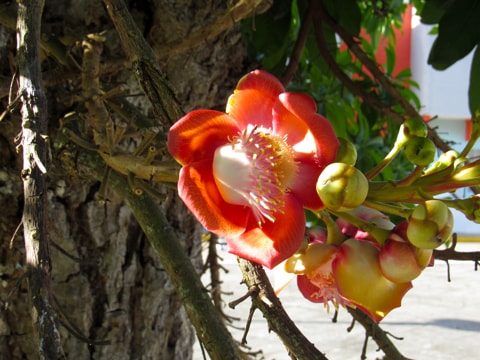
|
|
Flowers of the Cannonball Tree
|
|
|
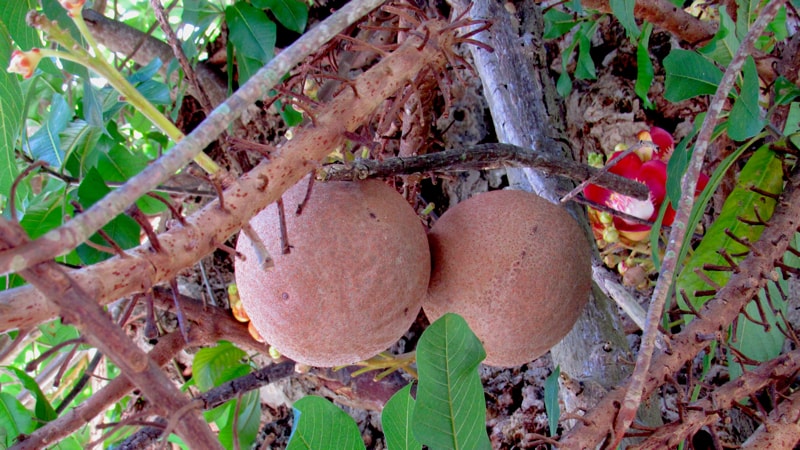
|
|
The fruit which give the tree its "Cannonball" name
|
|
Other scenes from around Toa Alta
Biblioteca Municipal
|
|
Casa del Artesano
|
|
The Municipal Library (Biblioteca Municipal Evaristo Izcoa Díaz). Located on Road PR-165R as it curves to go uphill to the Alcaldía and plaza de recreo, when entering the town.
|
|
The Artesan's House (Case del Artesano) named after Nortberto Cedeño is housed in what used to be the fire station on Road PR-165R, a few steps down from the Alcaldía and plaza de recreo.
|
Bandera de Hector en Toa Alta
The Toa Alta edition of the Bandera de Hector covers an entire house in Barrio Mucarabones. When the owner of the house learned about the project to paint a flag in every municipality, he offered his house to be the canvas for Toa Alta's flag. The offer was accepted by Hector Collazo and this flag (number 69 in his project) was finished during August 2021.
|
Municipal Theatre
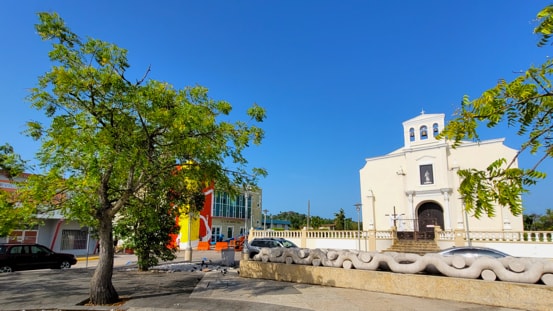
|
|
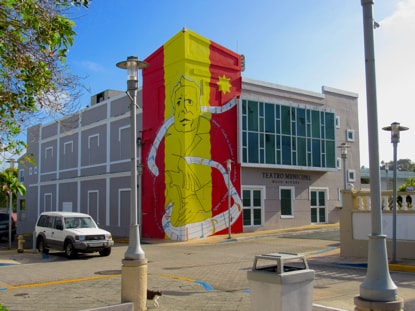
|
|
East side of the Plaza de Recreo
|
|
Teatro Municipal Maso Rivera
|
The Municipal Theatre (Teatro Municipal Maso Rivera), located at the northeast corner of the Plaza de Recreo Manuel Egozcue near the parish church of San Fernando Rey, and boldly showing off the town's colours.
|
|
|
|



